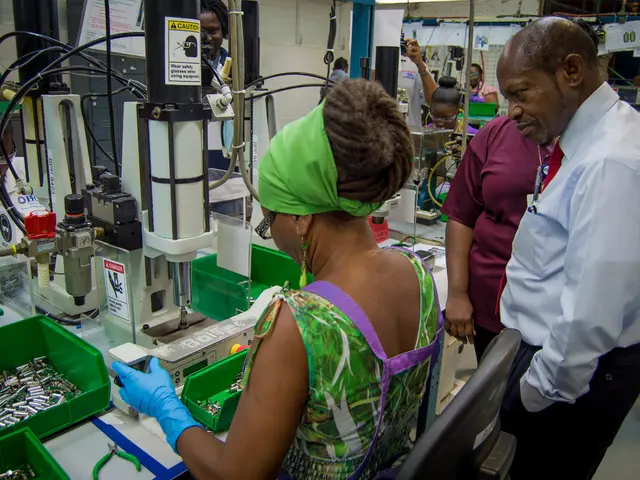Medical professionals are increasingly adopting virtual reality technology.
Virtual Reality (VR) and Augmented Reality (AR) technologies are becoming increasingly prevalant in the medical field, providing numerous advantages for various healthcare professionals.
Originally confined to heavy, cabled headsets and room-filling CAVE systems, VR technology has been democratized in recent years, finding its way into surgeries and care centers. Combined with cutting-edge features such as artificial intelligence, it is now being used for a wide range of applications, including treating seasickness.
The use of VR and AR in healthcare extends to the operating room, where they offer precise intraoperative guidance, advanced imaging, and surgical assistance to both experienced surgeons and recent graduates. For instance, in February 2024, Professor and surgeon Julien Berhouet introduced mixed reality in the operating theater at the CHRU in Tours, France. This technology, a hybrid of VR and AR, provides holograms and real-time guidance, reducing the margin of error during complex procedures.
Telemedicine, initially consisting of consultation via video conferencing, has evolved into medical metaverses - immersive, virtual environment consultations allowing patients to interact with their healthcare providers. These metaverses are considered the next potential revolution in healthcare, with the capacity to revolutionize remote consultations and tackling overcrowded hospitals or medical deserts.
Nurses and allied health professionals are increasingly utilizing VR and AR for procedural training, patient safety drills, and teamwork simulations. Immersive learning tools significantly improve knowledge acquisition and muscle memory development compared to traditional methods. The integration of related technologies, such as biometric sensors, robotics, and haptic systems, provides multi-sensory learning experiences.
The combination of VR and AI has emerged as a significant innovation in healthcare, with applications beyond space travel and pre-operative hypnosis. For example, the French National Centre for Space Studies and ESA supported the development of S.A.T., an immersive system using AI to treat anxiety. This system, which offers improved sleep, stress management, and increased self-confidence, has been effective in managing anxiety among astronauts and patients on earth.
Adopting VR and AR technology in healthcare is now within reach for professionals, with specialist companies offering ready-to-use solutions. Key considerations include evaluating suggested use cases, requesting demonstrations, and consulting client testimonials to ensure the chosen technology is well-suited to individual needs.
In summary, VR and AR technologies are transforming healthcare training and practice, offering increased precision, reduced risk, and more efficient, high-quality patient care across multiple professional domains. The ongoing development of these technologies will continue to drive innovation in the field.
- With the integration of AI, VR and AR technologies are being deployed in health-and-wellness programs for mental health treatments, such as S.A.T., an immersive system using AI that focuses on managing anxiety.
- As technology advances, telemedicine is evolving into immersive medical metaverses, revolutionizing health-and-wellness by providing therapies-and-treatments through virtual environment consultations, improving access to quality care.








